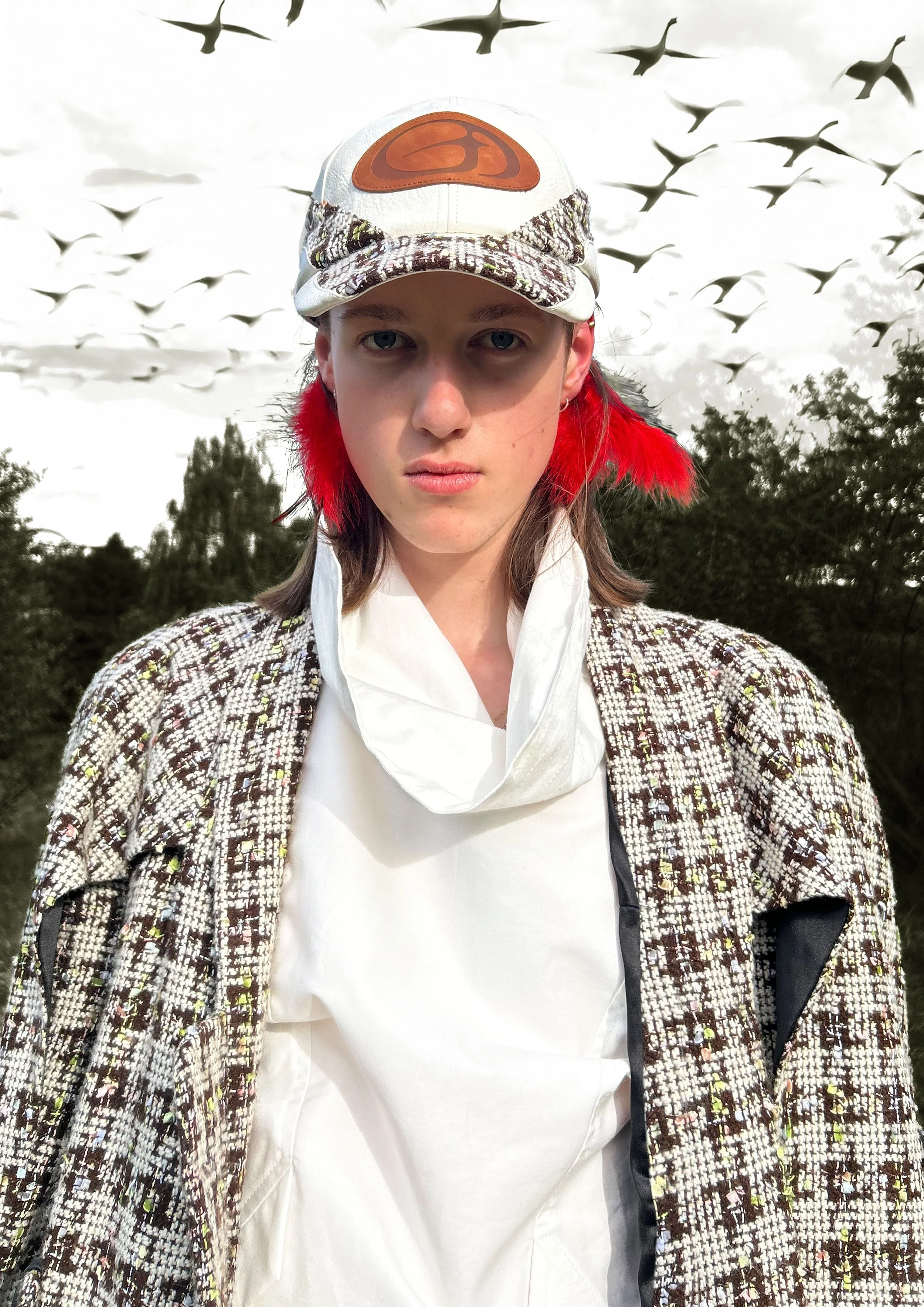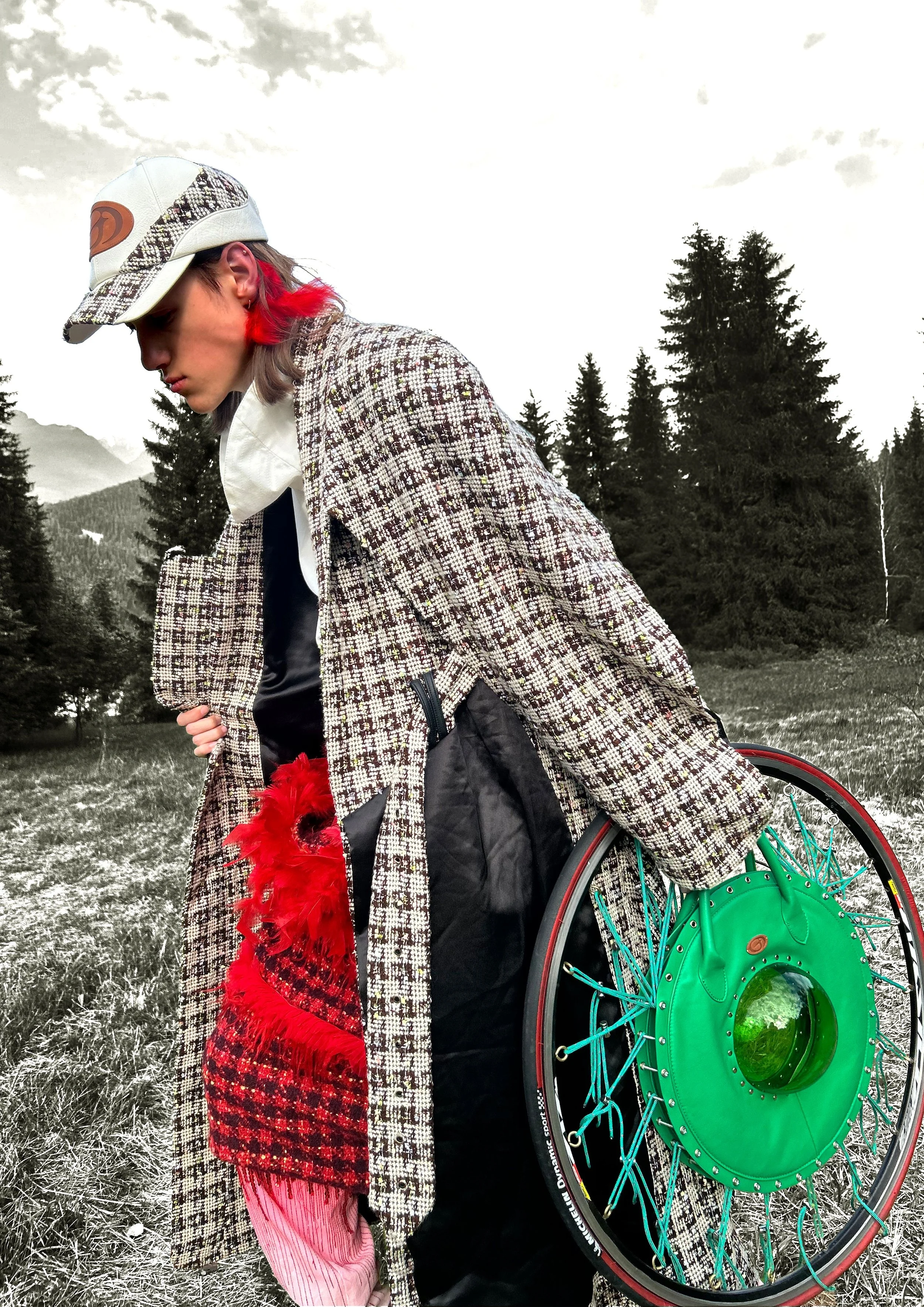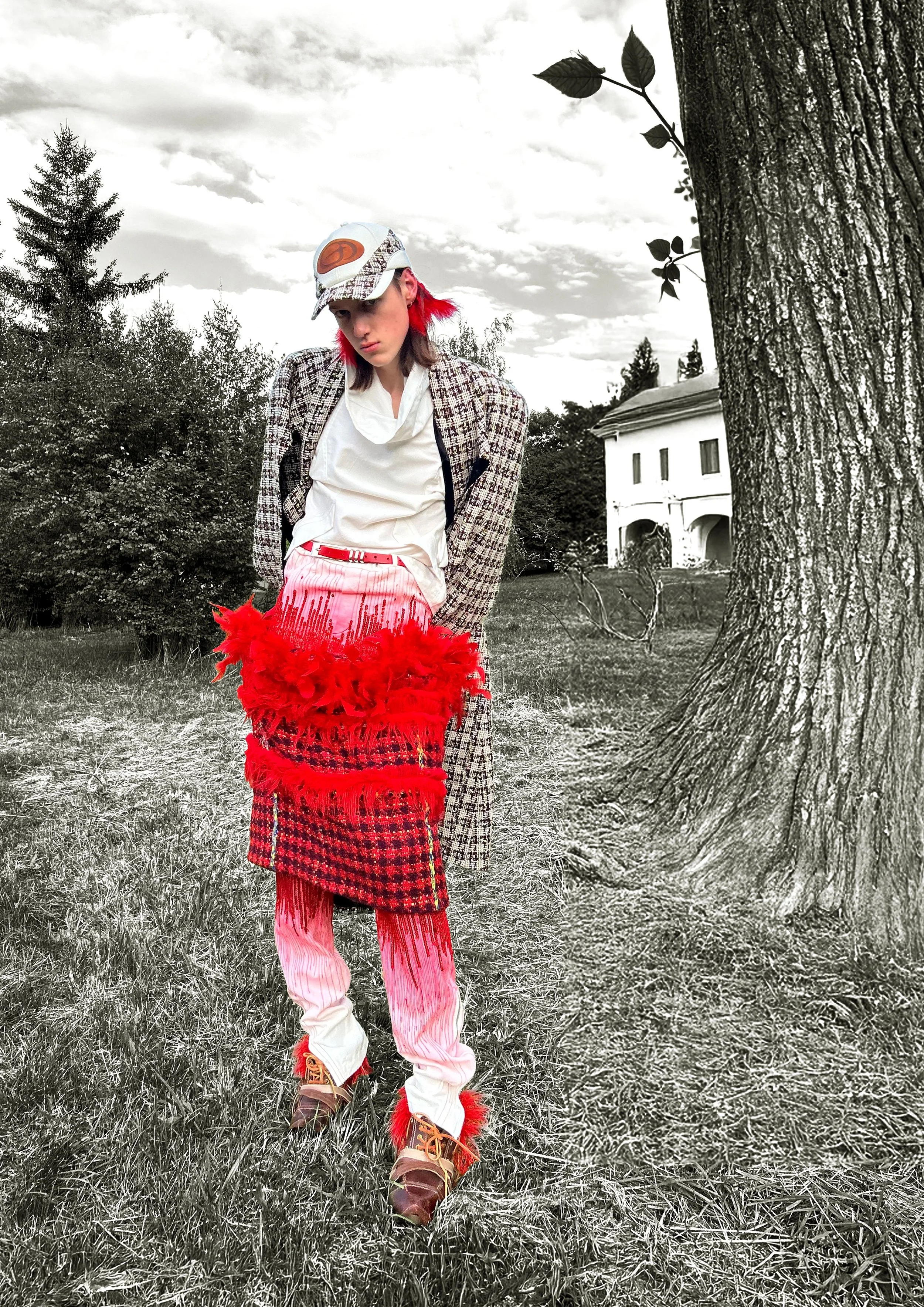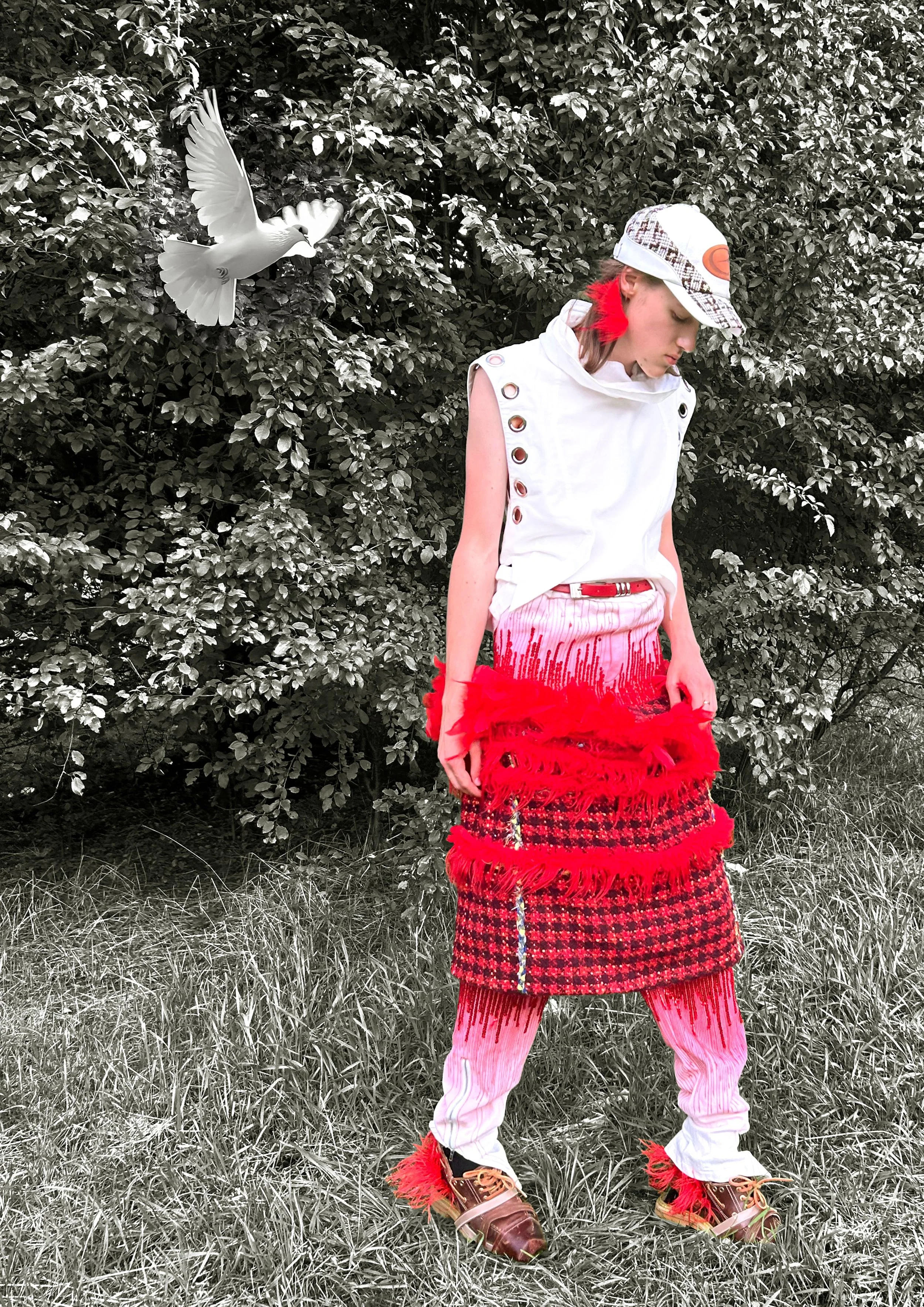Talent Talks: Jaden Xinyu Li
How are heartbreak, club kids, self-love, identity and wool tweed related? Fashion designer Jaden Xinyu Li draws from their own experience with a breakup, inspired by Alain Badiou’s In Praise of Love and the unapologetic spirit of early club kids and the cult film Liquid Sky. The graduation collection Love letters to the unwanted doesn’t mourn heartbreak but reframes it by transforming abandoned, unwanted and recycled garments into new narratives. Using vintage wool tweed, old hats, leather bags and discarded materials, Li explores regeneration as a space where identity is not fixed but fluid, and where both people and materials can be reshaped, reimagined and renewed.
Could you please introduce yourself?
My name is Jaden Xinyu Li, a menswear designer based in Antwerp. My practice focuses on transforming recycled and discarded materials into new fashion pieces. Through this process, I explore not only sustainability but also storytelling—how garments can carry new meaning after being reimagined.
Having graduated recently, how do you look back on your studies?
Studying in Antwerp was an inspiring journey. I gained strong technical skills, from pattern making to artistic research, but more importantly, I discovered my artistic identity. The program pushed me to think critically, experiment freely, and define the direction I want to take as a designer.
Could you please tell us something about your graduation collection/project?
My graduation collection began after a breakup—not to fix a broken heart but to understand it. Inspired by Alain Badiou’s In Praise of Love, I see heartbreak not as failure but as transformation—a shift that reshapes how we see ourselves and the future.
I connected this to vintage garments: once owned, now waiting for renewal, they carry traces of the past yet remain open to new stories. I relate to this transitional space, where identity can be reconstructed.
Visually, the collection draws from Liquid Sky and the spirit of early Club Kids—self-made, exaggerated, and unapologetic. Their autonomy reflects how I felt: even without love, I can shine on my own.
This work gathers stories of those who feel unloved or choose self-love, not to romanticize pain but to mark change. From that change, something stronger begins.
Which materials, techniques, programmes and/or applications are you mostly interestedin? Please specify your use and views on wool
I usually start by sourcing old or discarded garments that resonate with me. I work with them directly on the mannequin through draping, then refine the shapes digitally in CLO3D before constructing them physically. This allows me to merge traditional craftsmanship with digital tools.
As for wool, I especially love working with tweed. Wool is often seen as heavy or plain, but tweed opens up its possibilities with rich textures and vibrant colors. For me, it shows that wool can be both sustainable and visually exciting, bridging tradition with new creativity.
The exhibition you are a part of looks into the meaning of regeneration. What does regeneration mean to you and your work?
Regeneration is central to my practice. Personally, my graduation project was born from heartbreak and self-reflection. I see regeneration as healing, courage, and self-love—the ability to rise again after setbacks and to grow stronger.
On a material level, regeneration means giving new life to discarded clothes, making fashion both sustainable and poetic. Old garments are not waste; they can be reshaped and connected to new owners with fresh stories. In fashion, regeneration represents resilience, optimism, and responsibility for the future.
How do you perceive the meaning and importance of community within the fashionfield?
Fashion is never created in isolation. Community is about support, exchange, and collaboration. It allows designers to inspire one another and creates space for cultural and social connections.
In the industry, established houses often support emerging designers, ensuring a constant flow of new ideas. For me, community means heritage and innovation working together—it is what keeps fashion dynamic and alive
How do you view the future of fashion? And your own role therein?
I see the future of fashion moving toward greater individuality and personal expression, supported by sustainable practices and digital tools. Fashion will be less about mass trends and more about meaningful stories and emotional connections.
I see my role as a designer who brings discarded materials back to life, creating garments that reflect resilience and transformation. Through my work, I want to show that fashion can be creative, sustainable, and deeply human at the same time.



